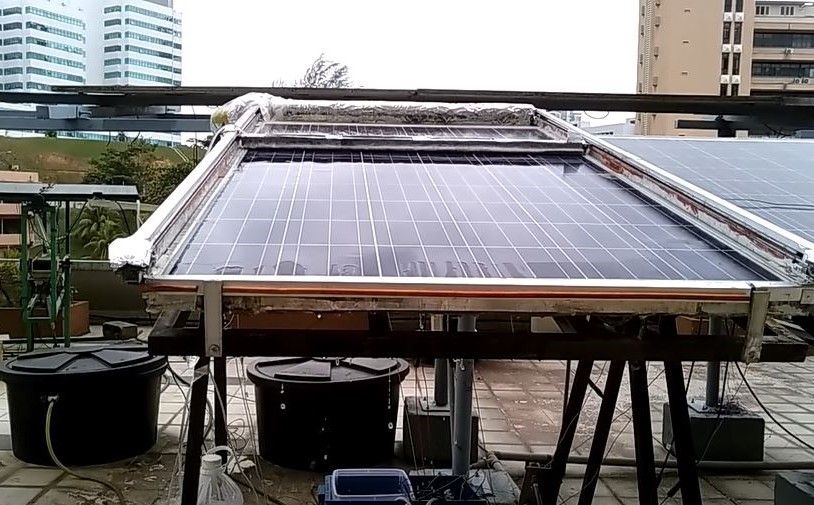Researchers from Malaysia’s Sunway University, the University of Malaya, China’s Peking University, and India’s Shri Mata Vaishno Devi University have developed a PV system equipped with an active cooling system and cleaning technology. The two systems were designed and attached to the solar panel separately.
The PV system consists of a 250 W 60-cell polycrystalline module and a thermal collector attached to the back side of the panel, with the collector ensuring maximum coverage of the PV module’s heated surface. The collector was made with copper pipes placed on the back of the panel in a double-serpentine configuration, by utilizing copper retainers and thermally conductive paste.
The researchers tested five different phase-change materials (PCM) to cool the panel. They found that lauric acid offered the best results, partly due to its high melting point.
The cleaning technology is based on a microcontroller programmable integrated circuit (IC), which controls a DC motor that rotates in a forward or reverse position. There are two different motors – one to power a small water pump and a 24V-2A DC motor that moves a cleaner on the surface of the PV panel.
“The main part of the self-cleaning system is the sweeper that comprises a microfiber cloth and a water flowline with a12-V,9-mA DC water pump,” the academics explained.
The sweeper moves along an aluminum frame mounted at the edges of the module. “The frame is made of hollow aluminum rectangular tube, it was designed separately and then mounted on an iron frame so that the sweeper can move easily,” researcher Adarsh Kumar Pandey told pv magazine. “It is very easy to implement and a normal installer can install it.”
The researchers compared the performance of the PV system to a standard PV installation at the University of Malaya in Malaysia. When the average ambient temperature was 31.76 C and peak solar radiation reached 981 W/sqm, the temperature of the system they created was 11.14 C lower than that of the standard system.
This strong temperature drop is due to the combined effect of the cooling technology placed on the back of the panel and that of the water spreading onto the module's front side through the cleaning system. “The maximum cell temperature difference can be found after the cleaning process,” the researchers explained.
After cleaning, when cell temperatures rise, the heat is absorbed by the cooling system again. The PCM takes up to two hours to melt and store the heat at usual levels after the cleaning operations are finished.
The research group describes the PV system in Self-cleaning assisted photovoltaic system with thermal energy storage: Design and performance evaluation, which was recently published in Solar Energy and on the ScienceDirect website.
This content is protected by copyright and may not be reused. If you want to cooperate with us and would like to reuse some of our content, please contact: editors@pv-magazine.com.




Village khaira
Tehsil chhata
District Mathura